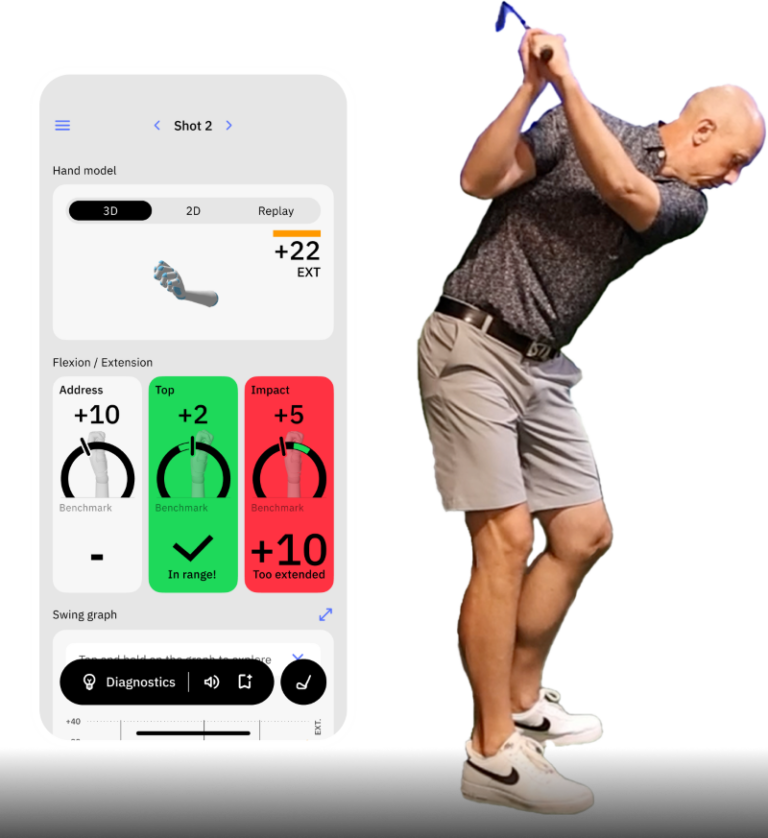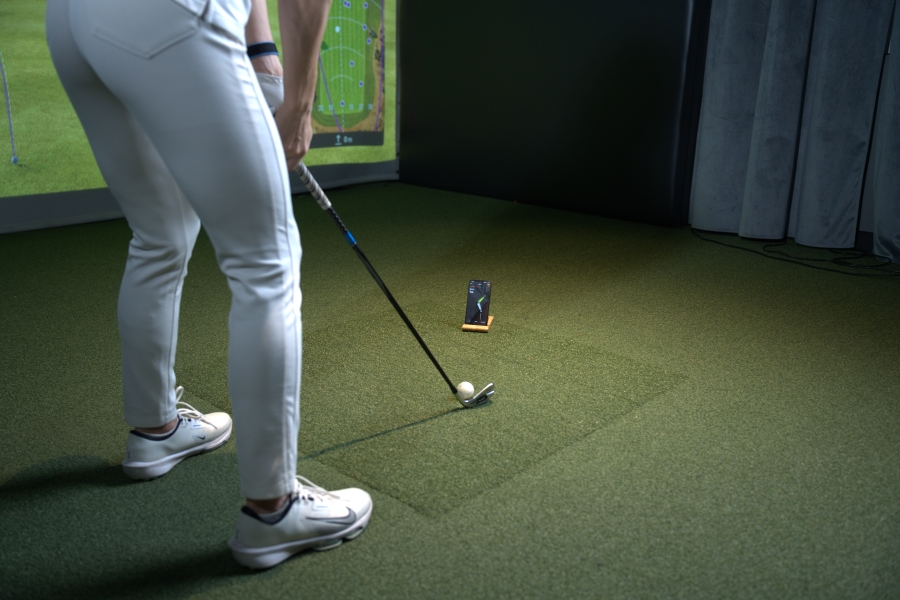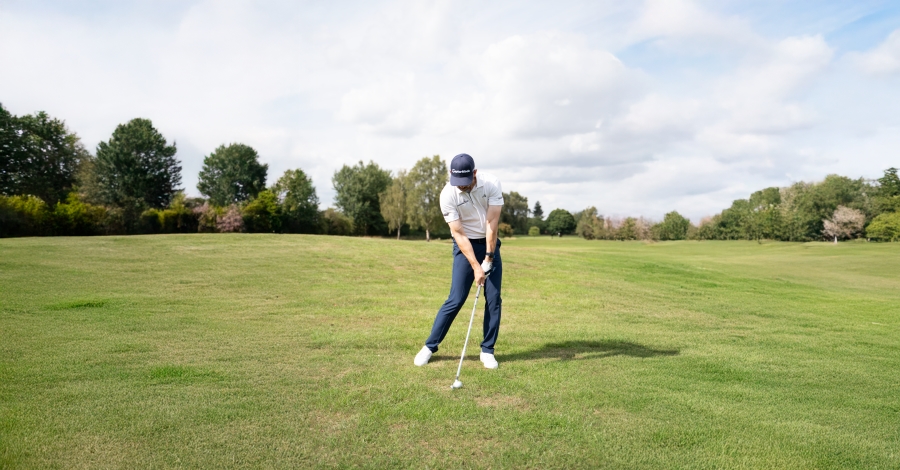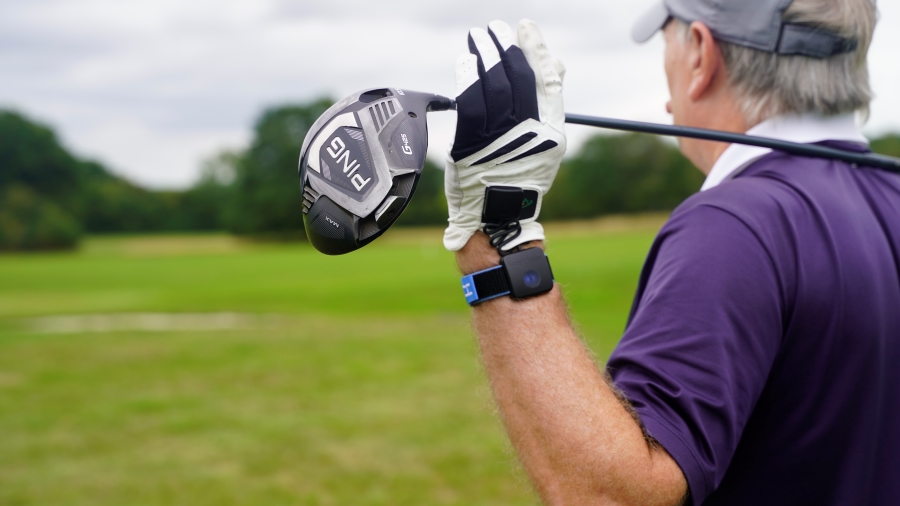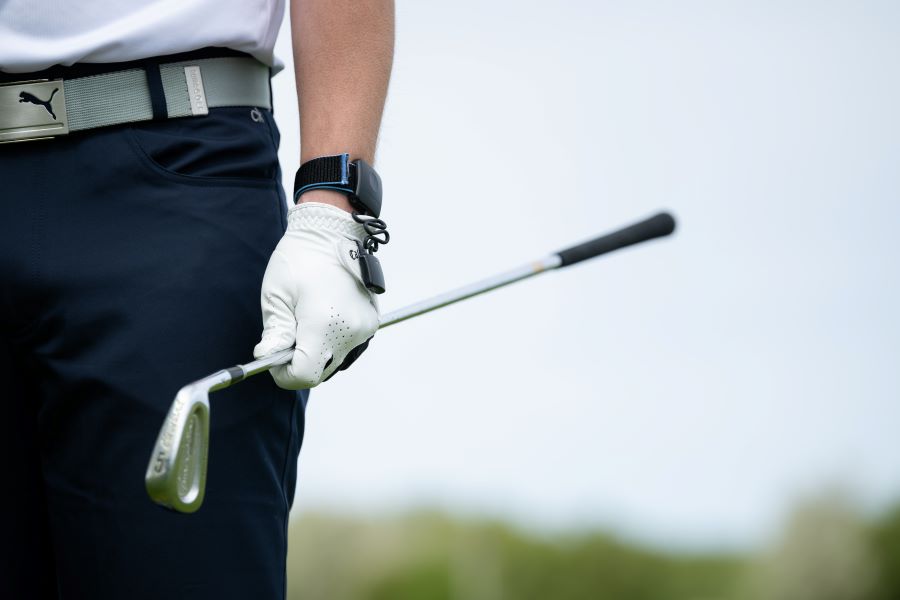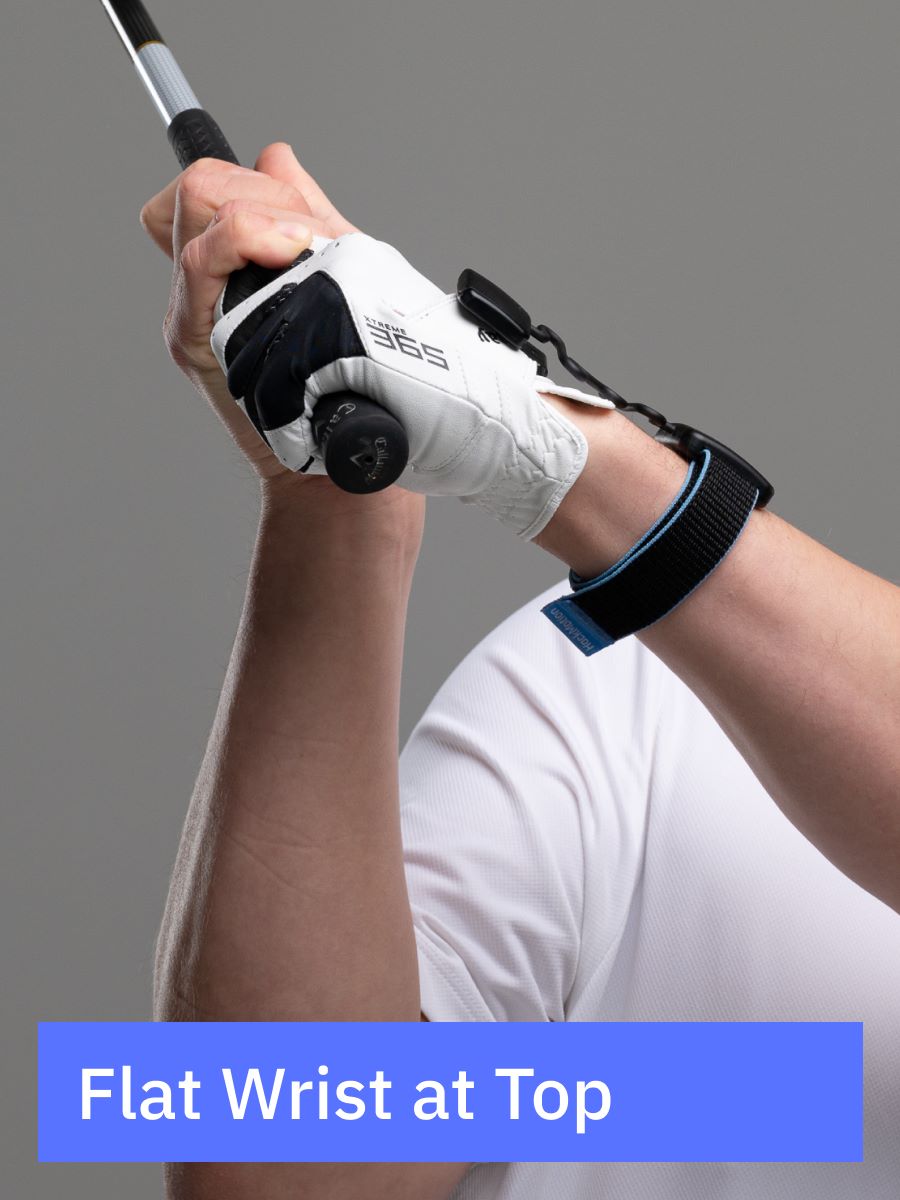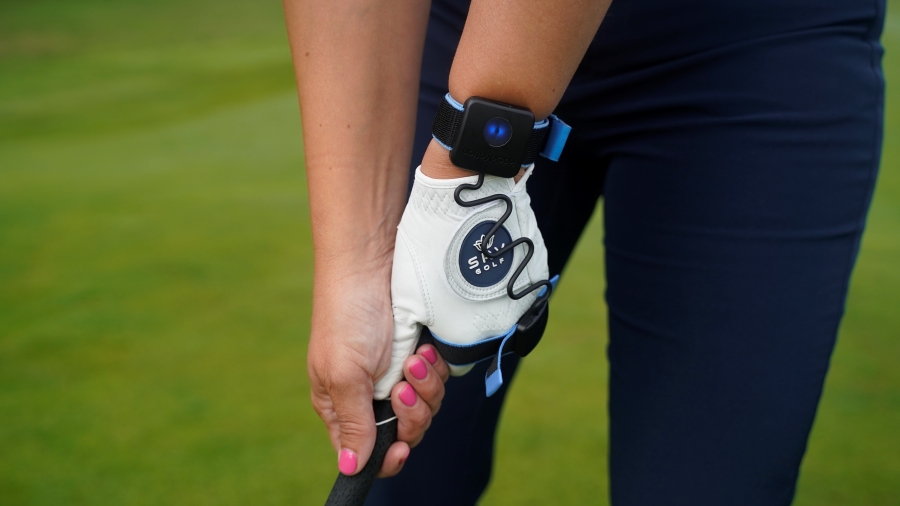How to Stop Rolling Wrists in Golf Swing and What to Do Instead
Have you been told to roll your wrists through impact when hitting a golf ball?
It’s time to rethink that advice.
Wrist rolling can cause unpredictable clubface angle and attack, hooks, slices, and general difficulty controlling your shot direction. Instead, mastering proper wrist action and release is key to a consistent swing.
With HackMotion, you can learn the correct wrist mechanics to improve your game. We will show you what the wrists do (and it’s not rolling) and how you can incorporate the proper release of the club.
Rolling Wrists in Golf Swing (Key Takeaways)
If you don’t have time to read our entire article on how to stop rolling wrists in golf, here are a few things you can take with you right now:
- Wrist rolling happens as part of the takeaway, but it mostly happens when golfers try to square the clubface at impact; both times, the concept is wrong. The wrists don’t roll in the golf swing.
- Forearm rotation, not wrist rolling, keeps the clubface square through impact.
- A flat lead wrist at impact is crucial for a proper release and to help improve both power and accuracy.
- Practicing drills to maintain this position helps prevent wrist rolling and ensures better contact and control; wear your HackMotion to monitor correct wrist positions during every swing.
Contents
The Difference Between Release and Rolling
Understanding the differences between rolling and release can help you eliminate snap hooks, pushes, or slices.
Golfers typically start rolling their wrists because they believe they are making the correct wrist movements.
Wearing HackMotion can help you determine if you are releasing with a proper forearm rotation or prematurely rolling the wrists.
| Technique | Description | Impact on Swing |
|---|---|---|
| Release | Forearm rotation with square clubface. | Improves power, accuracy, and consistency. |
| Rolling | Premature wrist rotation. | Leads to erratic shots and loss of control. |
How to Release Instead of Rolling the Wrists
Now that you have the basics of this terminology and concept down, let’s look at how to release the club instead of rolling the wrists.
These tips can be followed with or without using HackMotion, but having the data from HackMotion will help you progress faster, thanks to real-time drills and feedback.
Maintain a Firm Grip on the Club (Control)
There is no need to grip the club too hard, but you want to ensure control.
Ensure your hands are in a neutral position; a grip that is too strong or weak puts you at a disadvantage for the movement you need to make.
Steps to achieve a firm but neutral grip:
- Hold the club with your lead hand first, ensuring the handle runs diagonally across your palm.
- Place your trail hand below the lead, creating a V-shape that points to the trail shoulder.
- Apply firm pressure without gripping too tightly.
Focus on Forearm Rotation
Instead of rolling your wrists, think about rotating your forearms.
The rotation of the forearms keeps the clubface square. Rolling of the wrists causes too much change or manipulation of the clubface.
When you start to feel this rotation of the forearms, you’ll realize it happens naturally because of the clubhead’s weight.
Rob Cheney offers some great advice about forearm rotation, what to look for on your HackMotion while perfecting forearm rotation, and an important drill to help you feel the proper forearm rotation.
The drill consists of standing with your feet together and feeling the rotation of the forearms back and then through impact.
You’ll notice very quickly that it’s not your wrists rolling over; it’s your forearms rotating properly.
Also, try the 9 to 3 Drill using the HackMotion app:
Perfect Your Release with HackMotion
Fine-tune your release for consistent contact. Start with a short swing to master control before adding power.
HackMotion Release Drill – Step by Step
- Setup with your clubface square and your hands in their typical position.
- Swing back so the club is waist high, and check to see that you are in the green zone without excessive forearm rotation or wrist extension.
- Swing through impact to club parallel on the other side.
- Ensure the wrists did not roll through impact and that the clubface was square with a flat lead wrist at impact.
- Repeat 10 times and then try hitting golf shots from this 9 to 3 position to see if your contact is cleaner and more consistent.
Keep the Lead Wrist Flat
The flat lead wrist is the goal at impact.
The more extension you have in your lead wrist, the harder it is to square the clubface.
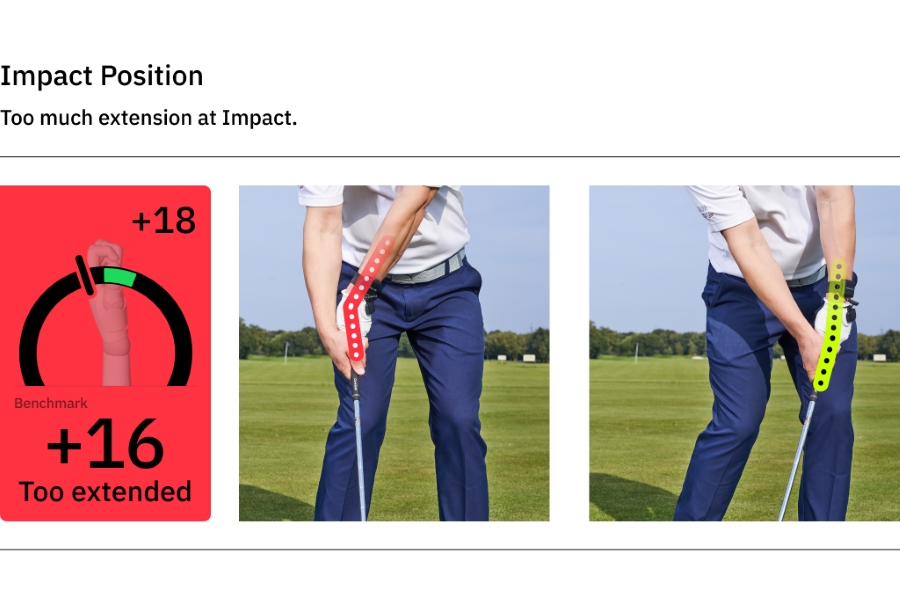
For golfers who exaggerate the roll in the wrists, the potential of a hook comes into play.
The goal is to have your wrist flat to slightly flexed, and you want this position in place just before impact. With the flat lead wrist, you’ll be able to rotate your forearms perfectly to encourage additional power.
Steps to maintain a flat lead wrist:
- Focus on not adding extension from the address to the top of the backswing.
- During the downswing, keep the lead wrist flat or slightly bowed during the downswing.
- Practice slow-motion swings, monitoring your wrist extension/flexion in real-time with the HackMotion.
The HackMotion Impact Full Swing Challenge is a great way to work on keeping the lead wrist flat at impact and not rolling your wrists.
HackMotion Impact Full Swing Challenge
Perfect your full swing with this interactive drill on the HackMotion app. Focus on timing and generating power throughout your swing.
The HackMotion Impact Full Swing Challenge
- Start at the impact position.
- Take a full swing (and hit a ball).
- Maintain correct wrist angle at impact (with hands more forward at impact).
- Watch the ball flight and then analyze your wrist angles to ensure there was no excessive rolling.
- Repeat to build muscle memory.
Use Your Body
Although we are focusing on the wrists here, you must not forget the importance of your core and body when it comes to hitting a golf ball. You must engage your body to make a turn and pivot.
As you saw in the Rob Cheney video, if your body stops, you may roll your wrists to attempt to create power and a square clubface.
On the backswing, weight will transfer to the trail leg, and on the downswing, it will transfer to the lead leg. Golfers who roll their wrists tend to underutilize their bodies throughout the golf swing.
To improve the connection between your arms and body in the swing take some golf swings with your feet completely together. Also try swinging to the top of your swing, stopping and then letting your weight transfer and hip rotation lead the downswing.
Some players like to swing with a soft ball between their forearms forcing them to get the body and hands working together.
Final Thoughts
At this point, you should understand that wrist rolling happens both on the takeaway and during what is supposed to be the release of the club.
It’s never a good thing to roll your wrists; instead, you want to think about getting the proper amount of extension/flexion in the lead wrist and rotating the forearms as they should.
